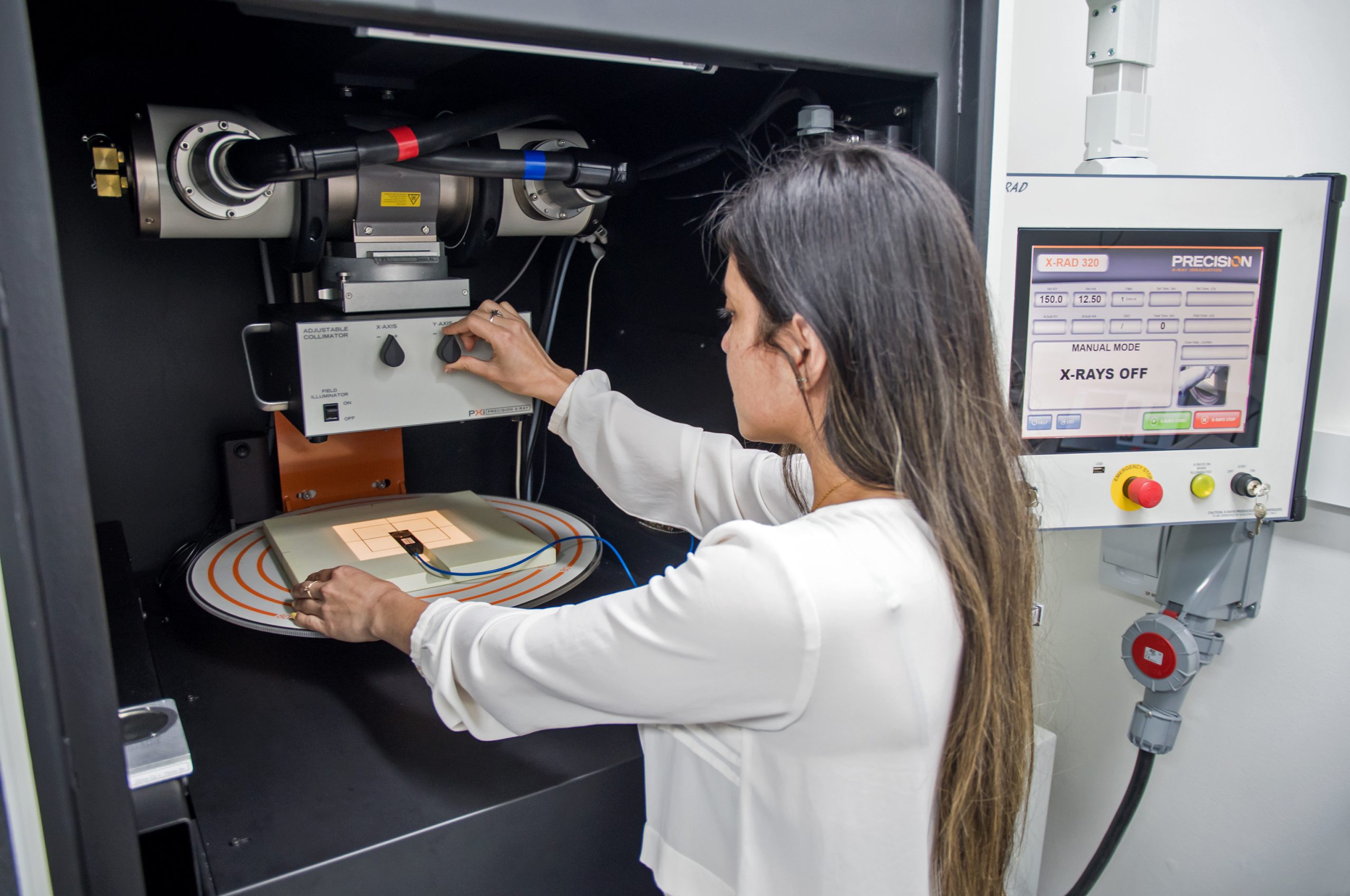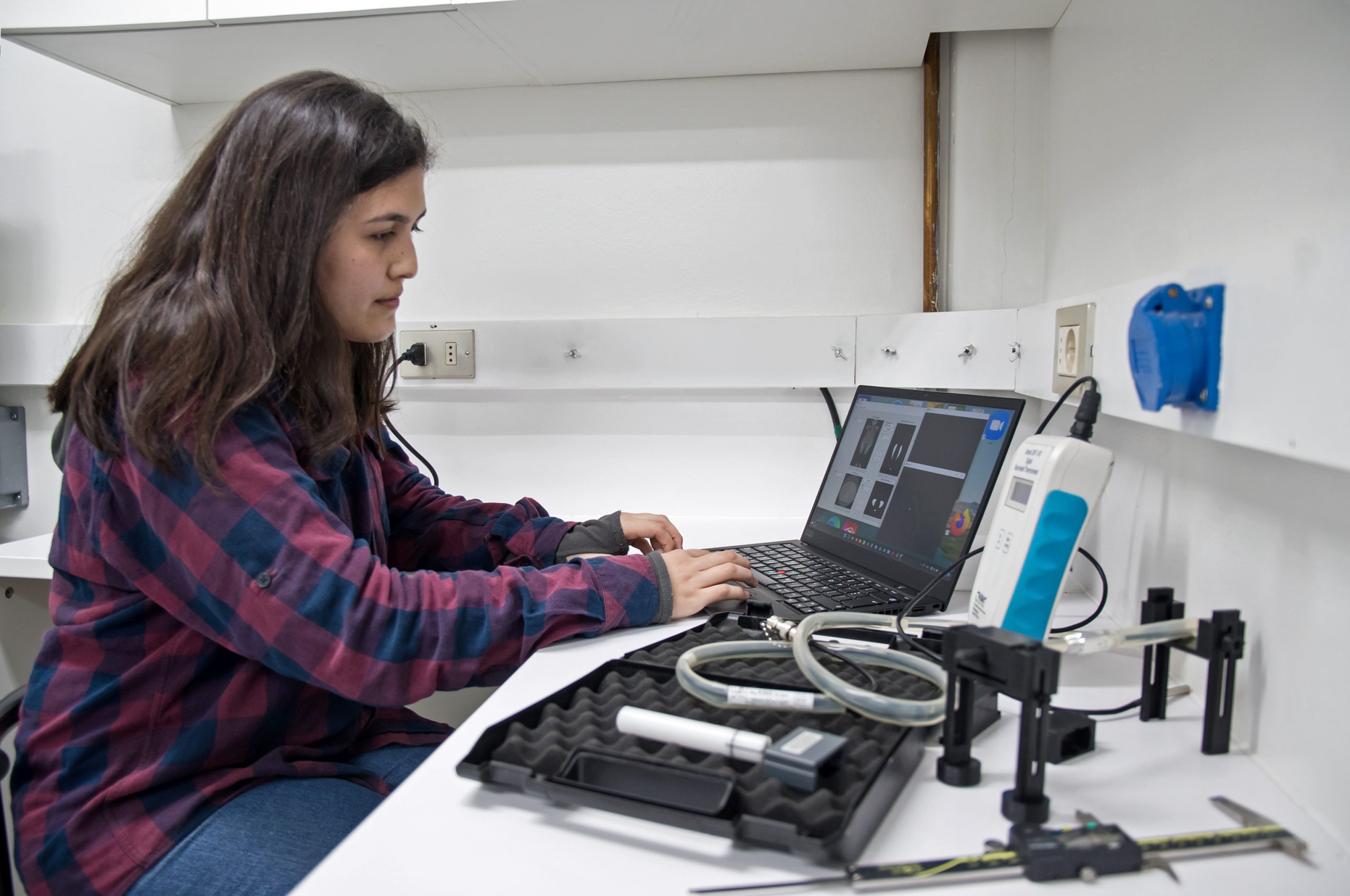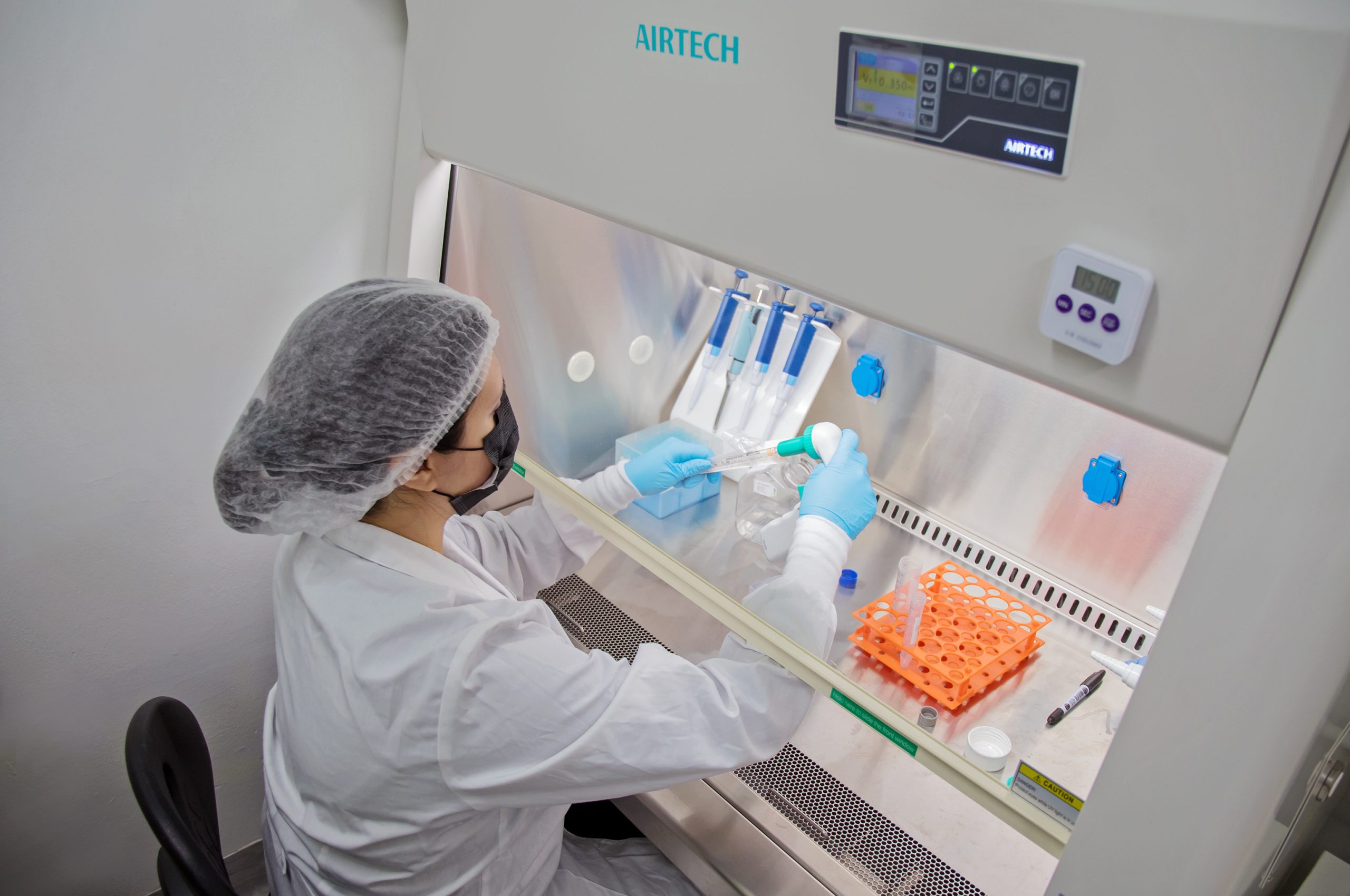Medical Physics
XPHYBIO Laboratory
Medical Physics
XPHYBIO Laboratory

XRad-320
The XRad-320 is an irradiator that delivers doses comparable to those delivered in radiation therapy (RT) treatments for cancer, but at lower energies. The equipment operates by generating beams of energies from 40 to 320 kVp with several additional filters that can modify its spectrum to achieve the desired beam quality. The photon beams must be perfectly characterized in terms of the radiation dose that is deposited on the irradiated sample. The sample may be a cell culture to verify or propose response models that may be translatable to the response of tumors to RT treatments. Also, in the field of the development of new radiation detectors, we can expose different materials or devices to characterize their behavior.

Physical dosimetry
Each radiation beam must be properly characterized in terms of the radiation dose deposited on the irradiated sample. For this we use detectors calibrated in foreign laboratories that allow, from their reading after irradiation, to calculate the deposited dose as accurately as possible. We have a wide variety of active detectors (Farmer, Plano-parallel, Semiflex and Pin-point ionization chambers, diodes, and a device capable of estimating the quality of the beam) and passive detectors (TLDs, alanines, and radiochromic films).

Laminar Flow Biological Cabinet
This allows sterile handling of the cell cultures that will be irradiated, given they are very sensitive to any contamination by fungi or bacteria that are commonly found in the air. We also have a cell incubator that allows the growth of these cultures, preparing them for irradiation as well as to observe possible changes in growth after exposure to radiation.
Welcome to the Xphybio Laboratory. In this laboratory we carry out experimental research in Medical Physics.
We invite you to click on each of the highlighted points to learn more about our techniques and equipment.